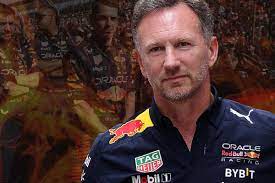The upcoming earth rotation July 9 will mark a unique event where time itself feels slightly altered under our feet. Due to the Earth rotating more rapidly this summer, there will be days where a fraction of seconds is shaved off the usual 24 hours. As fascinating as it may sound, this event holds implications for various aspects of our daily lives and raises questions about the mechanics of our planet.
Understanding Earth’s Rotation and Timekeeping
The Earth rotates on its axis once every 24 hours, a movement that has dictated how we measure time since ancient civilizations crafted sundials and hourglasses. However, this rotation is not as uniform as one might think, and it can be influenced by various factors, including geological and astronomical systems.
The concept of a day is founded on this rotation, and yet modern timekeeping hinges on atomic clocks that offer the precision necessary to synchronize activities globally. To better understand Earth’s rotation and its implications this July, it is essential to explore the mechanics behind timekeeping, the changes in Earth’s rotation, and the scientific endeavors that aim to measure them accurately.
The Precision of Atomic Clocks
Atomic clocks have revolutionized how we record time. These devices utilize the vibrations of atoms, typically cesium or rubidium, to maintain a highly accurate measurement of seconds.
Traditional clocks depend on mechanical oscillations and gravity, but atomic clocks are calibrated to lose or gain merely one second over 100 million years. This accuracy enables various technologies—ranging from GPS to telecommunications— to function seamlessly, establishing a critical need for precise timing.
The International Earth Rotation and Reference Systems Service monitors discrepancies between atomic clock readings and the actual rotation of Earth. Periodically, they must adjust this by adding a leap second, ensuring coherence between our measurements and the dynamic nature of Earth’s rotation.
The Reasons Behind Changing Rotations
Earth’s rotation is influenced by several natural phenomena, which can either accelerate or decelerate our planet’s spin. This summer’s phenomenon is unique, and understanding its causes could shed light on both the mechanics of our planet and the implications for our daily lives.
Among the suspected factors are the gravitational influences of the moon, geological activity, and the impact of climate change. Each plays a different role in altering Earth’s rotational dynamics.
Gravitational Influences of the Moon
The moon’s gravitational pull is perhaps one of the most significant contributors to changes in Earth’s rotation. As the moon orbits the Earth in an elliptical path, its distance can vary between perigee (the closest point) and apogee (the farthest point).
The unexpected acceleration observed around the earth rotation July 9 could be attributed to the moon’s relative positions. During specific configurations—such as when the moon’s orbit exhibits a steeper angle—the interplay of gravitational forces can result in slightly faster rotation.
Generally, when the moon is farther away, the Earth tends to slow, but the unique angle during the three predicted days this summer may counteract this effect.
The Shortest Days in History and Their Significance
In the realm of timekeeping, the earth rotation July 9 isn’t a singular event. Over the years, several instances have been recorded where the Earth has spun faster than the standard 24 hours. It is essential to appreciate these instances to fully comprehend the implications of changing Earth speed.
Historical Records of Shortened Days
The record for the shortest day ever, which occurred in July 2022, came in at a remarkable 1.66 milliseconds under the 24-hour mark. This shortening has implications for various natural phenomena and human technology.
Observing these shifts serves as a reminder that Earth is a dynamic planet subject to constant change. Such alterations can affect not only our calendars but also technical systems reliant on synchronization, underscoring the intertwining of human lives with celestial mechanics.
The Role of Earthquakes
Earthquakes are known to play a role in the dynamics of Earth’s rotation. When significant geological events occur, such as the Indonesian earthquake of 2005 that shifted Earth’s polar mass, the effects can be quite tangible. In that instance, the length of a day was decreased by 2.68 microseconds due to mass redistribution.
However, observing the phenomena this summer, recent seismic activity does not appear to have played a role, ruling them out as a cause for the accelerated rotation.
Climate Change and its Effects
Climate change emerges as a complex factor that can affect Earth’s rotational patterns. While some research indicates that global warming and the melting of glaciers lead to a gradual increase in day length, the immediate effect observed this summer appears to be unrelated to climate.
The increase in ocean levels and warming atmospheric conditions alter the mass distribution on our planet, creating subtle changes that may impact rotation—but the alterations this July point toward a different cause.
The Implications of Shorter Days
While a reduction of milliseconds in daily rotation may initially seem insignificant, the implications can range from trivial to critical.
Impact on Technology
Advancements in technology largely depend on precise timekeeping, and shorter days can impact numerous systems. GPS satellites, telecommunication systems, and military applications—all rely on atomic clock synchronization for optimal performance.
Even slight deviations can lead to discrepancies in navigation methods or communications. Thus, the phenomenon of a shorter day, like that forecasted around the earth rotation July 9, emphasizes the fragile craft of our technological landscape.
Implications for Daily Life
The average individual may not feel the effects of a few milliseconds shaved off a day, but it challenges the way we perceive time. When we understand that our time measures are predicated on natural cycles, it can shift our appreciation of everyday life and routines.
This understanding can prompt a reflection on how we allocate time to our endeavors, fostering a culture that embraces the present and appreciates the subtle rhythms governed by the natural world.
Broader Environmental Reflections
Notably, the phenomenon serves as a reminder of our planet’s interconnected systems. Earth spins, the moon orbits, and climatic changes shape our environment—every aspect relies on the collective interplay of forces that is an age-old dance.
By reflecting on shorter days, we can gain vital insights into global phenomena, our place in the cosmos, and the delicate systems that shape life on Earth.
Conclusively Balancing Time and Nature
As we approach the earth rotation July 9, it stands as a unique chapter in our ongoing relationship with time—one that invites us to explore its many layers. The rapid shifts in Earth’s rotation prompt essential questions about the nature of time, our reliance on technology, and the interconnectedness of global systems.
By appreciating the reasons behind these phenomena—gravitational forces of the moon, geological events, and climate change—we delve deeper into our planet’s dynamic nature. While the change may register in milliseconds, the implications and reflections on our relationship with time can leave a lasting impact that transcends mere seconds.
As the dance between Earth and moon continues, let’s embrace the rhythm of nature, forging connections that foster greater understanding and appreciation of our terrestrial home.

